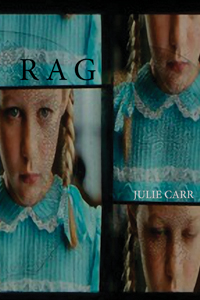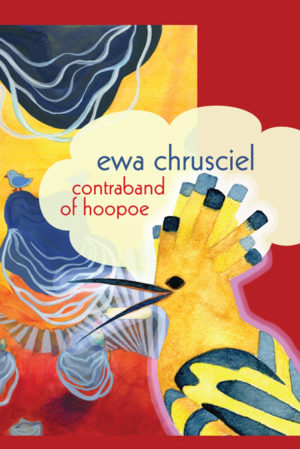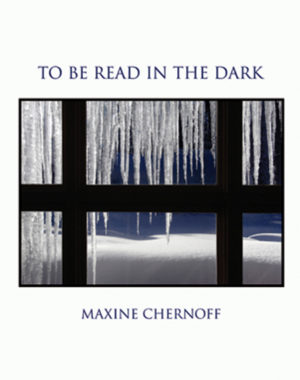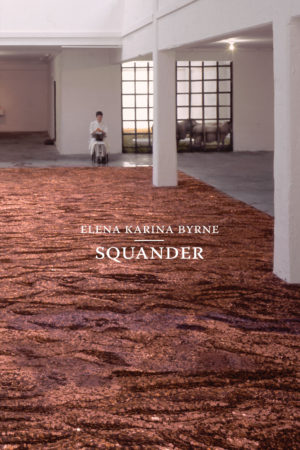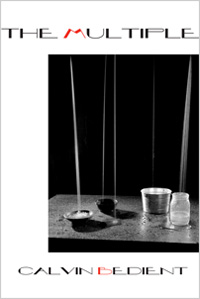Description
The question of civic lyric—the possibility of a politics of mourning—runs through this book-length aria-errancy-eros. All the vectors of “rag” are at work: polemical political journal, syncopated turn-of-the-century pop song, menstrual blood, burial shroud, complaint or insult, a cloth to wipe materials with, the barest semblance of clothes, the slang word for woman. The currents of energy running beneath this rag are equally human violence and a sexual force that erupts through fragments of films, fairy tales, real-life news, novels, and memory: a father on fire, a stranger in tears, a prisoner who believes he’s a dog, women in dresses made of food or women refusing to eat, a hit-and-run, a body with no face, or a face with no skin to hang it on, girls in water, women underground. Rag spirals relentlessly forward, picking up bits of recurrent language as it goes, its narratives troubled by stutter, broken by what can’t be told.
Listed by Library Journal‘s Barbara Hoffert as a key title of April 2014:
If you’ve missed Carr’s compelling works, like 100 Notes on Violence, you owe it to yourself not to miss this one—and then you can return to the previous works. Carr’s outspoken lyricism takes us into not-so-blissful domesticity (“—from out of the wretched tide through the heat mothers pass”) and, indeed, violence.
One of The Volta’s Best Books of 2014
In Julie Carr’s new book, Rag, the twin towers of the American empire, fathers and husbands, fall onto the bodies of children and women. Among the normative signs of disaster that constitute everyday life, characters stumble between the privilege of a race without race– “To find a color in this boy you had to split him open”—and the ambiguous privilege of gender —“Made to be humiliated and to be adored.” The excavations of “How power moves when hidden underground” demand an unflinching eye, an attentive ear. Carr moves between narrative and parataxis, prose and poetry, to delineate the violence perpetrated against women and children when the lean-to of race falls over: “The skin is an illusion of containment…” Rag is a prophetic howl in the wilderness of modernity, a book of accusations and self-recriminations as ancient as human culpability and guilt.
Tyrone Williams, author of On Spec
This book is a wonder — “Static on the whip of the day” — revealing the fissures and fixtures between the personal and the national, so tender, tough, and astute in its examination of these lively rags on earth it breaks and mends the heart that reads it. In these poems we know the glove and the hand, the ability and inability to move, remove, dress, redress.
Eleni Sikelianos, author of The Loving Detail of the Living & the Dead
Rag is gorgeous poems, I tell you, gorge-us. I’m engorged with them, they gorge on me. Embodied, transporting, Rag is what you write on, the makings and achings of pulpy paper, and what you wear when leaking ideas and words as bodily fluids. Rag is irregular rhythm that reinvents how we hear, what we think music is. Brilliant, shardy, delicate and steel-strong, these bloodlines pierce the reader.
Maria Damon, author of Dark End Of The Street: Margins in American Vanguard Poetry
About the Author
Reviews
Excerpt
Julie Carr is the author of four previous books of poetry, most recently 100 Notes on Violence (winner of the Sawtooth Poetry Prize) and Sarah—Of Fragments and Lines (a National Poetry Series selection). Her critical monograph, Surface Tension: Ruptural Time and the Poetics of Desire in Late Victorian Poetry was published in 2013. She lives in Denver and teaches at the University of Colorado in Boulder. She is the co-publisher of Counterpath Press.
A brief interview with Julie Carr
(conducted by Rusty Morrison)
The title Rag forcefully calls to my mind what is degraded, what is easily cast off. but this is only one of the many vectors that radiate from the word “rag.” Can you speak to your choice of this title and how it provoked, compelled, engaged you as a wrote these poems?
Rag: a worthless or sensational newspaper, a discarded bit of cloth, a torn fragment, a slang word for menstruation, a degrading term for woman or girlfriend, a piece of syncopated music, to tease, taunt, or insult. All of these meanings were in my mind as I worked on this book. I wanted to write a book about women and girls, one that recognized vulnerability and suffering (which is not the same thing as victimhood). I wanted to think about how our films, myths, fairy tales, and other media represent girls and women as fragmented, broken, even mutilated. But I also wanted to re-appropriate the term for its power. It’s a nasty word, in a way, not that far from “rage.” Thought of as a verb, it speaks back with “ragged” rhythms. The rag takes marching rhythm and twists it, syncopates it, so the rhythm isn’t regular anymore. That breaking or teasing of rhythm lets a whole lot of things happen, a whole range of expression becomes possible, not all of it nice, not all of it regulated. I’ve also always loved the poetic fragment – the sense of brokenness and possibility that fragments allow for.
The poems in this collection seem to me to echo and extend themes from your two previous books (100 Notes on Violence & Sarah). How do you see this book in relation to those two works?
100 Notes on Violence is a response to real-life violence occurring in our communities. It involved a lot of research into gun-violence, child abuse, domestic abuse, and other matters. And yet, it was also an attempt to face the very real fears that all parents deal with – to acknowledge the vulnerability of oneself and one’s children, and to acknowledge the violence that we all harbor. Sarah was born out of loss and gain: I was losing my mother to Alzheimer’s while pregnant with my third child, and wrote from a very visceral sense of the borders of being and of language. But what ties those books together, and what ties them to Rag, is my commitment to writing into difficulty. I want the work to challenge me on all levels – not just technically, but also intellectually and emotionally. I gravitate towards writing that confronts, that tries to grapple with crisis and suffering. From my nineteenth century guides (Keats, Hopkins, Dickinson), to the modernists I return to (HD, Williams, Oppen, Niedecker), to contemporary poets I care a lot about (Lisa Robinson, Anne Carson, Jean Valentine, Fanny Howe, Susan Howe, Fred Moten, CD Wright, and many others) there’s this willingness, or need, to open the poem to the world when the world presents us with its most palpable challenges.
This text brings together a diversity of formal choices: from the placement of a single phrase on a page’s field, to dense prose blocks. And, it also mimes, or mimics or interrogates the mediums of film and fable, and previous literary texts. despite, or I should say, because of this diversity, this text coheres in the way that a complicated, multi-aspected life coheres. How, for you, does the diversity of form organically express the complexity of the poem’s concerns? which poems/pages do you recall as being the most vexing to complete?
When I write, I don’t say to myself that I’m writing poems. I say to myself that I’m writing. I don’t want preconceived ideas about form to get in the way of whatever the piece of writing wants to do. I also don’t think very much about individual poems, but rather about books, or projects. It seems I work better within the frame of 100-300 pages, rather than a single page or cluster of pages. Poetry gets to make use of the visual arrangement of words on a page, which opens up a huge range of possible tones, or shades. I’m always interested in that when I read and when I write. I vary form the way that a composer might move between dense and sparse lines of music, or the way a choreographer might shift from solo to ensemble and everything in between, altering space and time. Since I’m looking for maximal range, I wouldn’t know how to do it any other way.
Because I don’t think so much in terms of pages, I don’t know that I can answer your second question. Every time I edited this work, I changed many things on many pages all at once.
Would you tell me a bit about yourself? Anything about you that is not in the bio printed in the book, and that might give insight into your more personal relationship to this text?
I’m a feminist. Though I think that’s a redundant identity, because I’m a woman, or because I’m a person. I’m not sure how one could say “I’m not a feminist,” if being a feminist means supporting equity and justice for women, and therefore, for all people. I grew up with a feminist mother; she was an anti-war activist, a civil rights lawyer, and the mother of four. Later, she gave up law work and, with her husband, became a craft-person, raising sheep, dying wool, making blankets that they sold through craft-fairs. These things are relevant, I suppose, because through her I learned the values of political commitment and struggle, and of bringing family and work life into relationship (I won’t say “balance”), and of making things with your hands. None of this was easy for her, but I think she set an example for the kind of life I wanted to live, which would include all of these things. In some ways all of my books have been dedicated to her. But this one is also dedicated to my daughters, my sisters, my other mothers, my teachers, and all my friends who identify as female and whose lives as women continue to inform and influence mine.
Who are the authors with whom you feel a kinship? who are you reading currently?
I already named some of the key people. I’ll add to that Eleni Sikelianos, Andrew Zawacki, Andrew Joron, Cole Swensen, Kate Greenstreet, Chris Nealon, Geoffrey G. O’brien, Ronaldo Wilson, Inger Christensen, Judith Goldman, Rob Fitterman, and all the writers that this book is dedicated to. There are many, many others: novelists, philosophers, and critics too – those are just some of the poets currently nearby.
You chose the image that is used in the cover design for this book. can you talk about your reasons for your choice?
The image comes from Luther Price, from a slide projection he made titled “Utopia.” I saw Luther’s work for the first time at the Whitney Biennial in 2012. I was just entirely floored. His work does exactly what I want to do in language, but it would take a long time to explain why. Let me just say that I could look at his work for hours, and it doesn’t stop amazing me. In this work he uses found footage, often home movies dug out of yard sales and such, and alters it with chemicals, mud, oil, bugs, whatever is at hand. He then photographs the film itself, creating the slides that become the piece. Since Rag is so much about girls and women and often references films, or seems filmic (to me) in its narratives, this seemed a perfect choice. I love the way her downcast eyes can be read as vulnerability and refusal at once. She won’t really let you examine her, which I appreciate. And then, when she looks up, she seems to challenge the viewer. The gaze turns back around.
Arresting sentence fragments, moments captured glancingly (a boy’s funeral, a woman sobbing on a plane), then the multi-award-winning Carr steadily delivers a reminder of the social and sexual violence that haunts us: “My country, said the boy to the girl, likes its children shot through/ My country, said the girl to the boy, likes its women weighted or flayed/ My country, said the boy, tears away. We’ve never really loved the human.” But these poems do.
Carr exposes the commercial value of women in stories—girls made to guess gruesome riddles, married off, or delivered as gifts. Her speaker declares that, “‘Like an oxen yoked’ the daughter must please the king, please or be killed,” before going on to say “A woman might be a kind of postproduction medium, or a filter through which the desires in the ground are felt.” Carr memorably and lyrically juxtaposes events, calling attention to deliberately cinematic gestures—“I made a movie about my life. The opening shot a polluted river, the closing shot my daughter’s eye”—to flesh out this beautiful, striking collection.
Carr’s book-as-body speaks: now forthrightly, now obliquely, now in anger, now in love, now in security, now in insecurity. Porous, it receives and sends forth news of the conflux of violence and growth that constitutes our political life in its several interpenetrating scales from the neighborhood to the national.
Carr details the experience of primarily female characters through the lens: “A woman might be a kind of postproduction medium, or a filter through which the desires of the ground are felt” (42). But it may be that Carr’s ultimate concern is a more genderless subjectivity, the constructedness of all those faces. As goes the imagined monologue of one of the actors from the director’s perspective, “consider my identity, she might say” (59). With this statement—hypothetical, projected, filtered—Carr invites her readership to consider the extent of anyone’s agency in a socially proscribed reality.
RAG continues a body of work by Carr that strikes me as more and more central to living in this day and age, in this country—not exactly a work of witness, for it understands its complicity. I might call it a map of the tangle: no life separate, in the end, from the fact of other lives; and yet, as it must be, connected to those lives in ways so vestigial we must work to feel the harm another suffers. Carr’s pages give us nerve. Not bravery, exactly. I mean nerves. She makes as nervous, as we should be. She gives us back our nerves.
Rag is set on articulating (obliquely, with mind clenched) the rapport between violence and possession. Women here are empty locations of desire, a truism that might constitute the law of advertisement: sex sells, meaning that it can be bought directly or vicariously. Rag is populated by film starlets reduced to a ghost of light, to an absence that can be filled or refilled with another person’s exercise of want. This is the real meaning of human possession. The heroine watches as the war hero departs on his train. “There were gaps between her teeth and she grinned ghoulishly at her own reflection in the moving train window … Consider my identity, she might say, failing to force her reflection to still” (39). The voice of Rag asks to be looked at “like a hole in the road, the garden or the sky” (39). The logic of possession, of being possessed, is insane. The possessed is obliged at the same moment to be and not to be.
Rag focuses specifically on the problems of identity: how myriad social contexts define and obscure our understanding of self. Carr addresses this notion of subjectivity early in the collection, stating, “When will I learn to be the author of my own invention?” A suggestion she quickly counters with “I was written in,” and later recontextualizes for her readers with the phrase, “as horrified you see yourself invented.” The challenges of identity are revisited again and again throughout the collection, especially as they pertain to the individual female experience embedded within the cultural milieu that figures all females as wives, daughters, lovers, or mothers.
Rag is a book of self-abandon, but not in the terms we usually think. Carr forfeits a cohesive self to see the larger strictures—such as gender, race, narrative, and memory—inside which a self is structured.
Through a measured, precise lyric rife with anxiety, grief, domestic abuse, parental fear and remarkable clarity, Carr weaves together a collage of brutal fragments to compose an articulation of what remains. Responding to real-life violence that surrounds us in culture, and surrounds her more directly, hers is a skill that allows the accumulation its incredible power, without allowing the text to completely overwhelm. More than a simple showcasing of examples, Carr’s is a text that works to critique such forces, pushing a book-length meditation of perfect lines and sections that explode with a remarkable force.
The re/up-cycling of literary history to address major social issues takes a radical and radically different form in Julie Carr’s brilliant new book, RAG (Omnidawn, 2014), which renders overspilling ache in another register. Ambitious and expansive, RAG conjures and creates an (anti-)Whitmanic, feminine figure in the midst of familial intimacy and in the shrapnel of tragedy encountered every day: “A city is an efficient way of carrying./And if I beg here, a cry pens itself toward the prying sun. A target. A wretch./The cars parked each morning like lines from a poem always the same and always/misremembered. Each night the cars renew themselves like sleeping children […] every participant has his hand to his mouth. To find a place of rest, a place not/busy with men, I walk” (22-3).
Rag doesn’t flinch from the difficulty of sickness and death and insufficient “civic expenditures.” It both soothes and intensifies this difficulty with moments, in the midst, that are as intent and lovely as any I’ve recently read: “And he who grows basil each summer // Hangs his jeans out to dry // Love is no way to be removed // Static on the whip of day”; “Seeking paradise, invent glass.” In Andy Fitch’s essential recent collection of interviews with contemporary poets, Sixty Morning Talks, Carr mentions her interest in “a poetics that doesn’t give up on ornament, that doesn’t give up on pleasure, that doesn’t give up on pleasures of language itself”; Rag continually shows that, more than being decorative, such pleasures are vital architectures of experience.
It’s always that the lines of color are too stark
So how can I place a hand there, there on the edge of a truck?
One’s body is in response
But today my face grows smaller
I want the narrative of walking to a bus
Alcohol sped to my eyelids
How power moves when hidden underground
A red flag marks buried electricity
But I’d thought it was buried everywhere
On November 17 and in summer
The letter carrier in his cap
I could find just one of my slippers
Nonetheless I put it on my foot
A wasp lay dead on my desk
The majority opinion was against
My “vacation” my “shadow” my “vacation,”
When will I learn to be the author of my own invention?
This from the spider descending the shade
When a man puts his hand on my waist
Nothing left in my cup or my word bank
I “refuse” I am “bribed” I “refuse”
But am good with the liquefaction process
A brutal response
I could hear you speaking in the alley
Where the girl in the lavender vest would come and go
And he who grows basil each summer
Hangs his jeans out to dry
Love is no way to be removed
Static on the whip of the day

